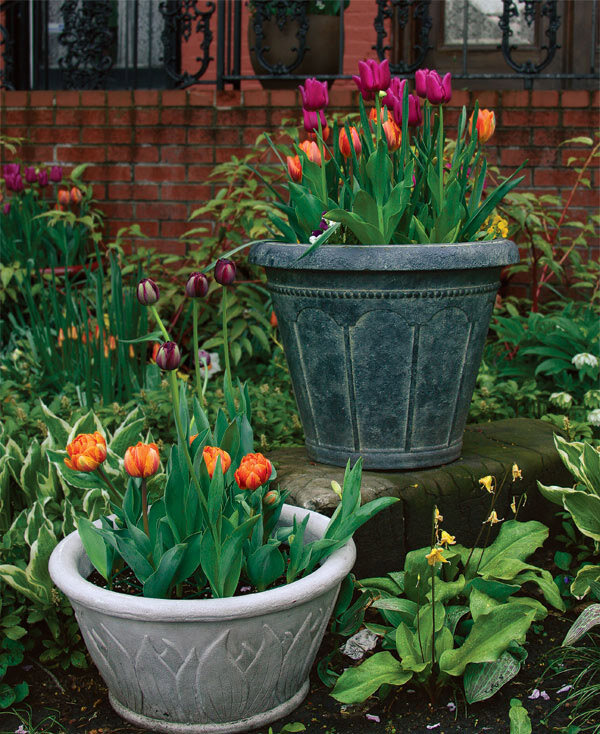The joy of flower bulbs in pollinator gardens
Fall is the perfect time to plan for and plant your spring flower garden. If you start now, you can design your own flower garden by planting bulbs using a variety of flowers and arrangements. So, …

You must be a member to read this story.
Join our family of readers for as little as $5 per month and support local, unbiased journalism.
Already a member? Log in to continue. Otherwise, follow the link below to join.
Please log in to continueNeed an account?
|
The joy of flower bulbs in pollinator gardens
Fall is the perfect time to plan for and plant your spring flower garden. If you start now, you can design your own flower garden by planting bulbs using a variety of flowers and arrangements. So, plan now for those lovely tulips, crocuses and daffodils to announce the arrival of spring. There are several simple reasons to plant flower bulbs:
1) Bulbs are easy — they are packaged for easy planting and low maintenance;
2) Bulbs are bountiful — brightly colored flowers come in all varieties;
3) Bulbs are dependable — they bloom consistently on time, year after year; and,
4) Bulbs like bees — and bees like bulbs.
According to “Gardening Know How: Planting Bulbs For Bees – Popular Bee Friendly Bulbs For The Pollinator Garden,” in recent years, pollinator gardens have become quite popular among hobby gardeners and seasoned growers alike. Flowering plants within the garden offer beautiful floral displays in the landscape, as well as serve as essential sources of pollen and nectar needed by insects.
What are bulbs? Any plant that stores its complete life cycle in an underground storage structure — to store nutrient reserves to ensure the plant’s survival. There are five types of storage: true bulbs, corms, tubers and tuberous roots, rhizomes and fleshy roots.
So, when’s the best time to plant?
Fall-planting bulbs — as soon as the ground is cool, evening temps 40 to 50 degrees Fahrenheit, for spring bloom. Also called hardy bulbs, these are planted in fall, spend winter in the ground and flower in spring. Some of the more common spring bulbs are: tulips, irises, daffodils, hyacinths, alliums and crocuses. They need several weeks of cold temperatures to break their dormancy and flower to full potential.
Summer-planting bulbs — planted in late spring after last frost, typically May 31, for summer to early fall blooms. Also called tender bulbs, these are planted in spring and flower or leaf out in late summer. Some of the more common summer bulbs include gladiolus, lilies, caladiums and elephant ears. Some will bloom later in summer or for a longer time, like dahlias that bloom into fall. Summer bulbs aren’t tolerant of cold temperatures and should only be planted after the ground warms up and there’s no longer a threat of frost.
Where to plant? You can plant your bulbs in pots or in the ground. Here are some helpful tips:
• Tag team with annuals.
• Interplant with other perennials.
• Ring the tree in the yard with spring flowers.
• Plant flower bulbs in clusters.
• Stagger bloom time.
• Try a double-decker effect.
• Scale your garden to fit your needs and capabilities.
• Not only good for Sunday dinner, lasagna (planting) is great for bulbs in pots. Plant bulbs with different sizes and staggered bloom times in layers for a continual bloom. Works great in large containers that are deep and wide enough.
How to plant?
• Choose where to plant, full sun/partial shade.
• Prepare planting bed, add compost.
• Plant 2 to 3 inches apart, with point up, 2 to 4 inches deep.
Some common problems
• Inadequate nutrients: cutting off foliage before it has died back; leave it.
• Inadequate sunlight: planted in shade; move to sun.
• Overcrowding: large clumps of flowers; separate bulbs.
Aftercare
• After blooming, cut only the flower stem back. Leave foliage intact until it turns yellow and wilts to the ground.
• Spring bulbs: In warmer climates, bulbs that require chilling can be dug up and stored until pre-chilling time the following fall. For colder climates, they can stay in the ground. Many will multiply and return year after year.
• Summer bulbs: In warmer climates, bulbs can be left in the ground with a layer of mulch in winter to protect and insulate them. In colder climates, they’ll need to be dug up and stored until the following spring.
You can review a pre-recorded workshop on “The Joy of Flower Bulbs.” For more information about Master Gardener workshops, visit udel.edu/master-gardeners and click on Garden Workshops.
For questions on this subject or any gardening topic, call the Master Gardener Helpline: in New Castle County, 302-831-8862; in Kent County, 302-730-4000; and in Sussex County, 302-856-2585, ext. 535.
Members and subscribers make this story possible.
You can help support non-partisan, community journalism.
Other items that may interest you








